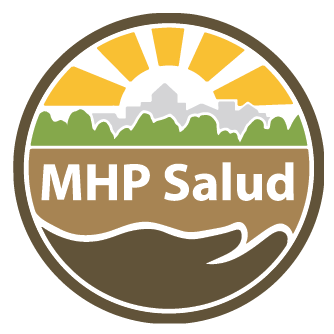The Telegram
A Newsletter for CHWs and CHW Allies
The Telegram is a quarterly newsletter designed for Community Health Worker Associations and their members. Please share The Telegram with your state CHWA members as appropriate.
Community Health Worker Training Modalities: Virtual vs. In-Person

Having adequate training for Community Health Workers (CHWs) is key to further advancing the CHW profession. Traditionally, CHW trainings and any required practicum hours were largely conducted in-person. Although we strive to deliver these trainings in different ways, the pandemic forced the training modalities to focus more on virtual learning to meet safety guidelines and continue serving our communities. Many training programs had to transition quickly and be flexible depending on technology access of the CHWs being trained. MHP Salud was ready for the challenge as trainings have been provided both in person and virtually for several years prior to the pandemic. Even with as much preparation as we had, however, there still have been obstacles and challenges that have required innovative solutions. The pandemic has forced an evolution in training in a way that it is now used as an advantage to reach out to more CHWs and continue providing them with necessary tools to help their communities.
Obstacles and Challenges
As MHP Salud began providing solely online training, there have been notable challenges and obstacles. As we train CHWs across the United States, many of our training participants come with different levels of technology access. Many learners may not be up-to-speed with video conference platforms; this can cause confusion or frustration when attending the virtual classroom. Another issue we’ve experienced is that some participants may live in an area that only has access to low bandwidth internet connections. A way to overcome these highlighted challenges is by planning ahead with the group being trained. A logistics call with the organization hosting the training often solves these issues as they can be prepared with the knowledge on how to use the video conferencing platforms, Learning Management Systems (LMS), and other technology requirements. Having someone available for troubleshooting issues during and prior to the virtual learning will have a positive impact on the participants, and they will be more open to future sessions.
Evolution of Training
It is understandable that some topics are best discussed in-person to allow more interaction and engagement from the participants. Selenia Gonzalez, a CHW Instructor with MHP Salud, shared her experiences with in-person and virtual training. “In-person training was more interactive, there was more participation with our activities as we got to move around. Training would last the allotted time due to the constant interaction. With virtual training, that became a challenge at first due to low participation”. Low participation in the virtual setting was an issue that correlated with participants’ familiarization with technology or at-home distractions. Selenia continued, “There was a shock in the beginning due to participation, we had to get creative in our dinamicas (ice breakers) and plan on using other formats of facilitating the sessions and creating group collaborations between the participants to keep the engagement going; this has improved over time.” One thing to keep in mind is that the trainers also had to adapt to this sudden change. Selenia also mentioned that most of the participants have adapted to video conferencing, sessions are handled smoothly, and both trainers’ and participants’ comfort level has increased.
Some certifying bodies require a certain number of practicum hours to pursue or renew a CHW certification. These requirements are generally completed as part of an in-person training. The solutions to address changes in these requirements vary depending on the certifying body. Please contact your CHW association or certifying body to see what options are available on required practicum hours.
Click here to learn more about CHW training offered by MHP Salud.
Strengthening the CHW Profession through Apprenticeships
Strengthening the CHW Profession through Apprenticeships introduces apprenticeships and is geared towards individuals and organizations that are interested in learning about avenues to advance or expand the CHW profession. Apprenticeships are an effective career pathway, enabling employers to develop and prepare their future workforce through classroom instruction and paid work experience. Many apprenticeships lead to a portable, nationally recognized credential.
The resource provides information on key components, best practices, and insights into the benefits for both CHWs and employers. This publication and all of MHP Salud’s resources are available for download when you register as a member of our FREE CHW Resource Portfolio.
For over three decades, MHP Salud has established and developed CHW programs across the U.S. to improve the health status of Hispanic and Latino communities. Additionally, we provide support and training for organizations looking to implement or strengthen their own CHW programs.
Request for Information Call Out!
MHP Salud believes that high-quality CHW training is an essential component of successful CHW programs. We have prepared a brief survey to better understand the needs of CHW organizations, CHWs, and CHW allies to ensure that our Training and Consulting support options are designed to meet those needs.
CHW Tools for Education and Engagement

CHWs use a variety of popular education or other adult education techniques in their community. It is important when training CHWs to include these types of learning activities not only so they learn but also so they can use these techniques while working in their communities. Quick Tools is a guide to gather information on the impact of a training or educational activity, and it offers a variety of fun evaluation techniques that can offer CHWs and facilitators feedback on the session and offer improvements for the future.
Resources for Community Health Workers
CHWs have a toolbox of resources to help serve their communities. While they may not be an expert in a specific topic, what is important is they have the appropriate and trusted tools to provide to the community when needed. Remember, in addition to national tools, it is ideal that CHWs keep local tools on hand as well!
Rural Community Health Workers
Community Health Workers are critically important in rural areas where services are limited. For more information on how rural communities can develop Community Health Worker programs that meet their specific needs, please visit the Rural Health information Hub Community Health Workers Toolkit
COVID-19 Resource Directory for Community Health Workers
In this directory, you can access educational resources focused on Community Health Worker (CHW) COVID-19 interventions for Latinos and Farmworker Communities. You can also find resources for family caregivers of Latino Older Adults. Please visit, CHW COVID-19 Resource Directory
Community Health Worker Association Technical Assistance Calls
MHP Salud is excited to invite you to our series of Community Health Worker Association Technical Assistance Calls. These calls will focus on encouraging peer networking and troubleshooting, based on topics from the CHWA training needs assessment and polls conducted during TA Calls.
NACHW Unity Conference and Annual Meeting
Join CHWs, partners, and allies at the preeminent national event to elevate our impact! The virtual event will be held on August 3-4, 2022.
More information can be found at here.





